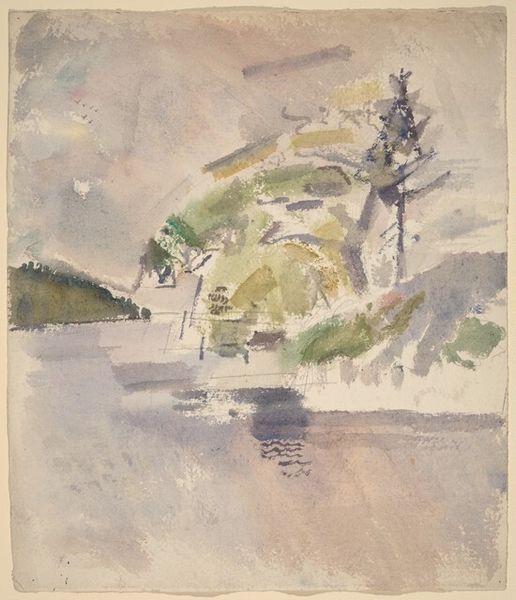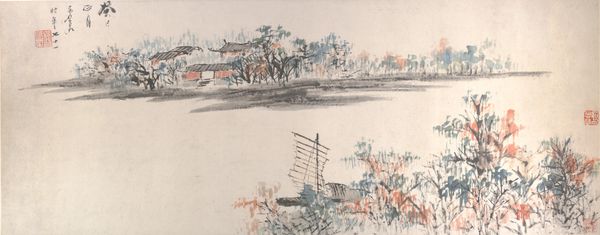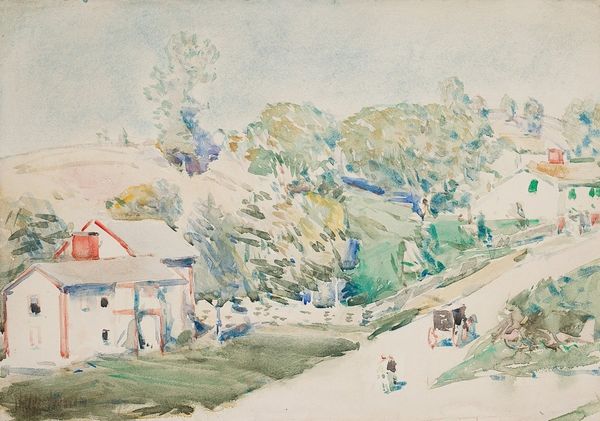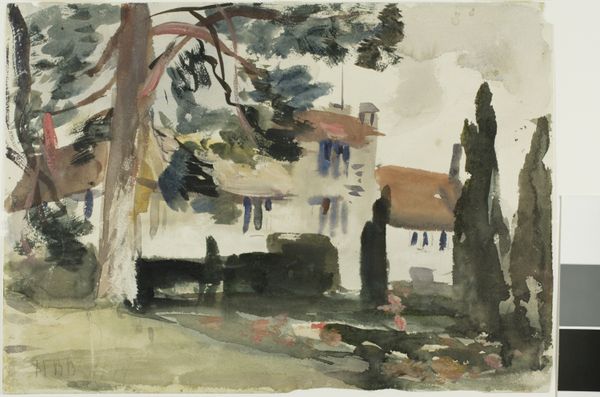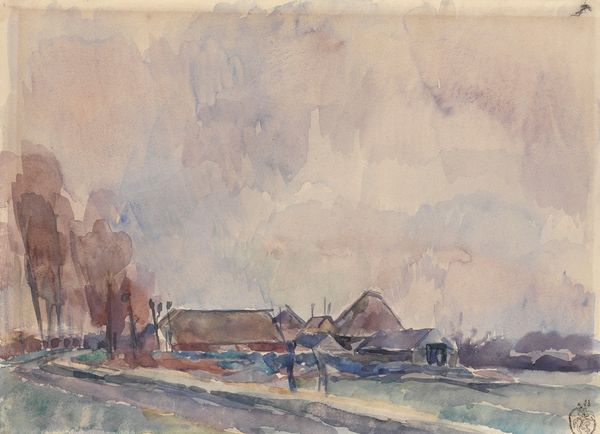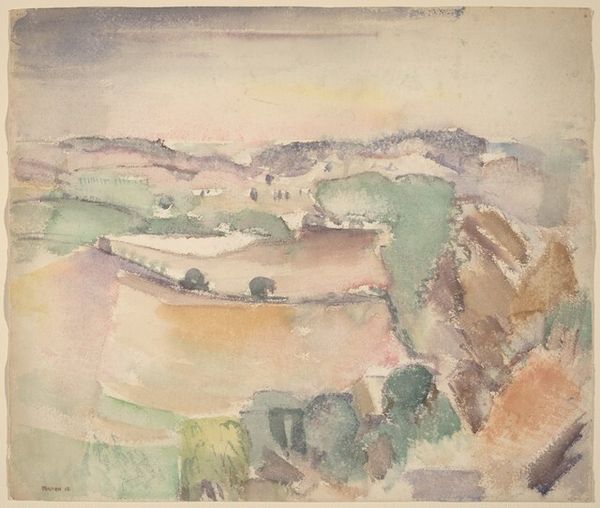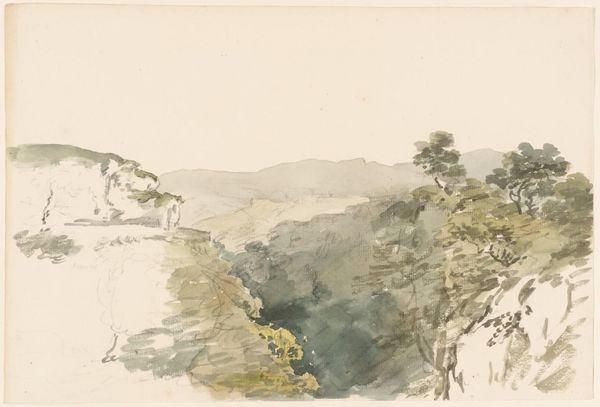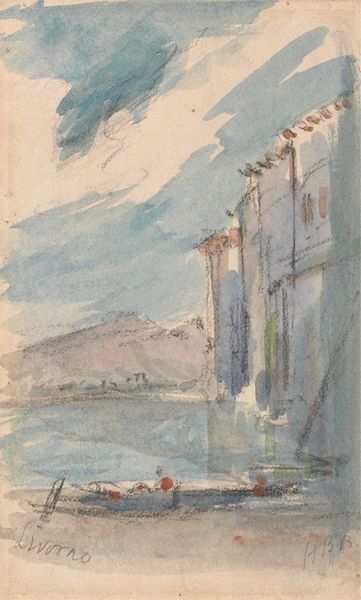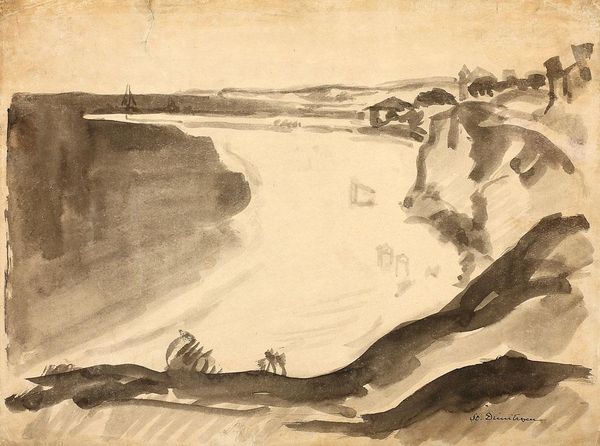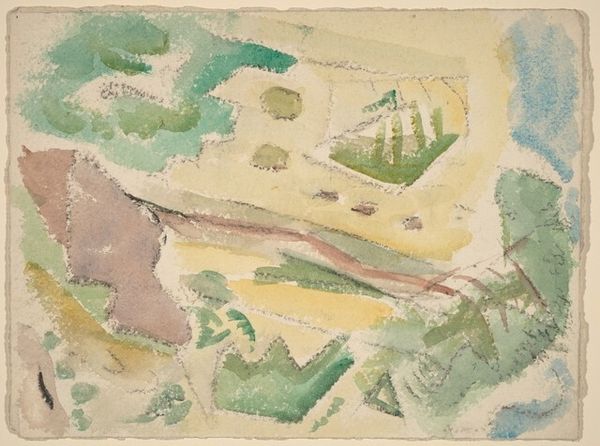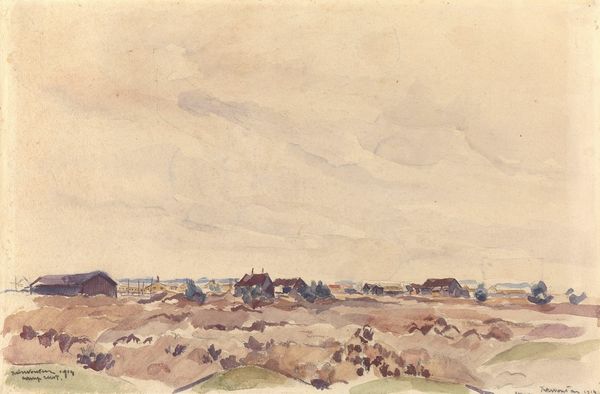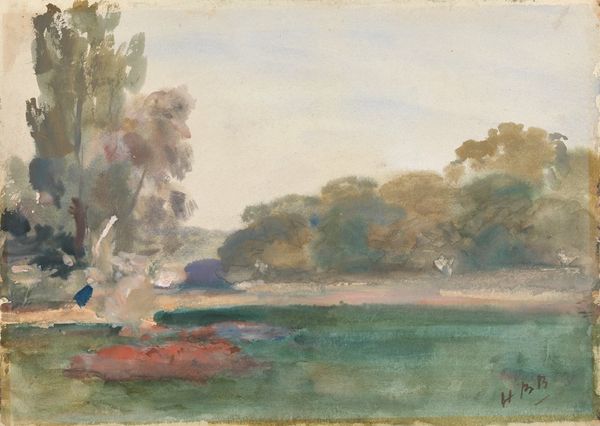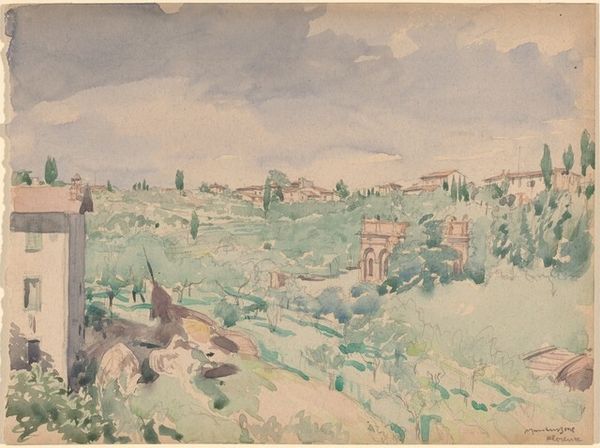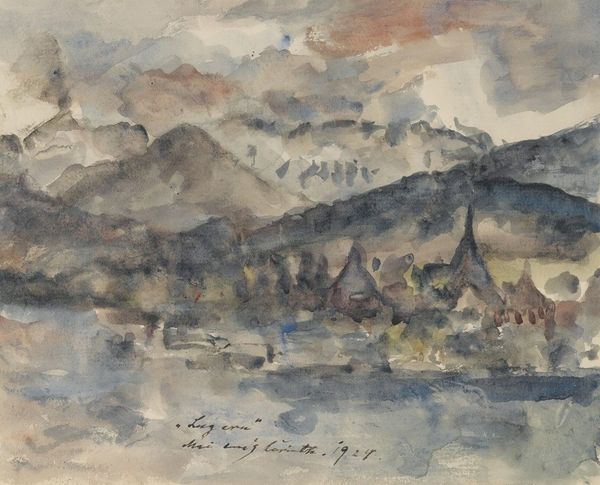
watercolor
#
water colours
#
impressionism
#
landscape
#
watercolor
#
cityscape
#
watercolor
Copyright: Public Domain: Artvee
Paul Gauguin made this watercolor painting of a village scene to explore his interest in the life and culture of rural communities. Painted during a time of rapid industrialization and urbanization in Europe, ‘Le Village’ reflects a nostalgic view of rural life that was common among artists and intellectuals of the late 19th century. The artwork presents a quaint village scene, possibly somewhere in France, indicated by the French flag, with modest houses, a church steeple, and lush greenery. Gauguin's choice of subject matter and loose, impressionistic style suggest a desire to capture the fleeting beauty of a traditional way of life. To understand this artwork better, scholars could look to sociological studies of urbanization, the history of French nationalism, and the writings of contemporary critics. By examining the context, we recognize that the meaning of Gauguin's painting is contingent on the social conditions and cultural values of his time.
Comments
No comments
Be the first to comment and join the conversation on the ultimate creative platform.
